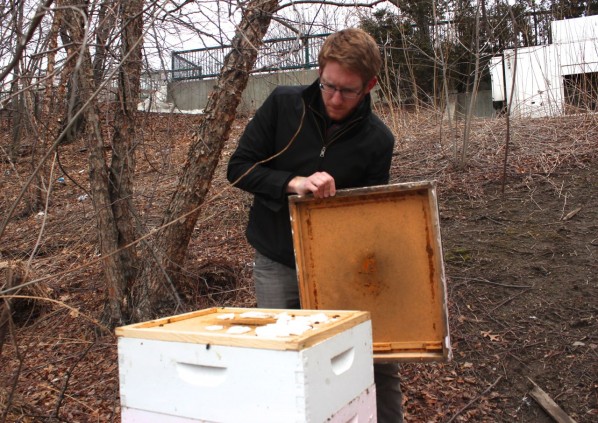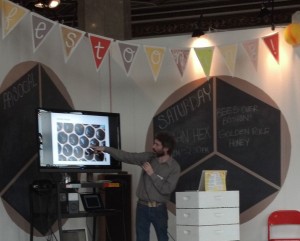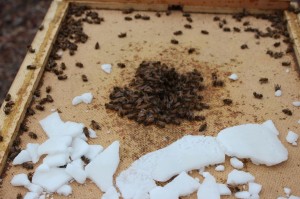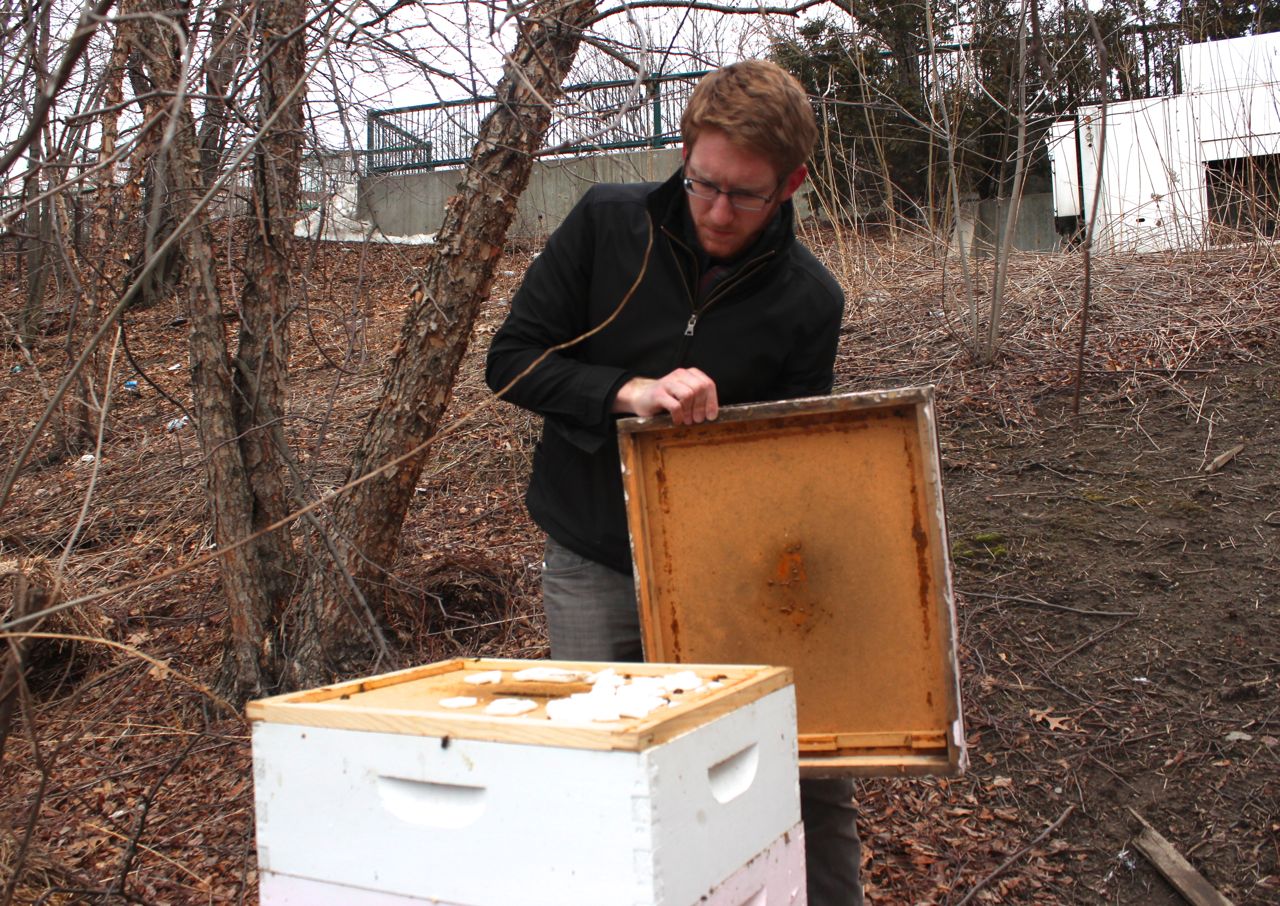
The day after the 2013 blizzard, while other Boston University students were diving into snow drifts and taking future profile pictures, Brendan Hathaway (ENG ’14) was making his way down an icy hill with one thing on his mind: bees.
An active member of the BU Beekeepers, Hathaway made the trek across the BU Bridge to check on the club’s three hives, which sit at the bank of the Charles River next to the BU boathouse. Normally, he says bees spend the winter inside their hive and pay no mind to whether or not it’s snowing outside. But the blizzard conditions prompted him to take a look, just in case.
“You don’t want any water to get in the hive,” Hathaway said. “If the hive is covered in snow or ice, that’s a problem…if the bees get cold, they die.”
The hives are housed in three boxes, each close to four feet high and spaced about six feet apart. The snow had piled up to nearly half the height of the hives, blocking the dozen or so bee-sized holes at the bottom that allow them to leave.
So, Hathaway cleared the snow away from the hives and left the bees to take care of themselves. And they did.
“I’ve said this and I’ll say it again, it’d be great if humans could evolve to bees,” Hathaway said.
The way bees survive the winter is incredible for its simplicity. Dean Stiglitz, co-owner of Golden Rule Honey and an expert on beekeeping, spoke about bees’ survival methods during the winter on Saturday, February 23 at an APi Social, at the Festooning the Inflatable Beehive exhibit highlighting urban beekeeping in BU’s 808 art gallery.

He explained that bees keep warm during the winter much like penguins do, forming a ball and rotating from the warm inside to the colder outside. They produce the heat necessary to do this by flexing their flight muscles.
“As a cluster animal, they act very much like a warm-blooded animal,” he said.
According to Hathaway, the average temperature of a hive is 98.3 degrees Fahrenheit, not much different from humans.
Like many other animals stock up on food for the winter, bees spend the warmer months of the year storing up honey. If bees think they won’t have enough honey to make it through the winter, they’ll take care of it before winter starts.
“In the warmer months, if they’re running low on honey, they’ll raid another hive,” Hathaway said. He said these raids can be vicious. “If you’ve ever seen bees fighting, there’s body parts everywhere. They just rip each other apart.”
If a hive runs out of honey during the winter, it won’t survive. However, beekeepers can do things to keep the bees alive even when they wouldn’t survive in the wild. One of the BU Beekeepers’ three hives has used up its honey for the winter, so the club put bits of white sugar in the hive for the bees to feed on.

“That’s the simplification of beekeeping,” Hathaway said. “They collect nectar and make honey just to get through the winter.”
Humans use this instinct to get bees to make more honey than they need. Stiglitz, the beekeeping expert, says bees would never make more honey than they need to survive the winter, but beekeepers have found ways to make the bees think they need to make more even after they’ve reached that point.
“One thing you need to always keep in mind is there’s bees and there’s beekeeping,” he said.
One thing the BU Beekeepers have to keep under check is the bees swarming. In nature, bees like to make their nests in a hollow tree or a similarly cavernous place. Once they’ve filled that cavity, they “swarm,” and half of them go off to start a new hive.
When humans keep bees, they keep them in hollow wooden boxes with pieces of wax paper for the bees to build their hive on. In order to keep them from forming a new hive, beekeepers will add boxes to make the bees think they need to expand into the new cavity before they can go start a new hive. Stiglitz calls this the incredible expanding cavity trick.
Although some might be squeamish about the idea of three beehives sitting on the other side of the river, the beekeepers’ bees are important to the health of the surrounding landscape. Bees are one of the primary pollinators, and Hathaway says many of the flowers on the banks of the Charles River and even on BU’s campus rely on them.
That is one of the differences between honey bees like the ones the beekeepers take care of and yellow jackets, which are actually a type of wasp most people think of as bees. Yellow jackets are predatory insects that don’t make honey are not serious pollinators.
Stiglitz said urban beekeepers commonly use bees that are more docile than wild bees and are not as aggressive as most people think.
“In the three years I’ve been doing this, I’ve been stung once,” Hathaway said. “And that probably could’ve been avoided.”





Beads?